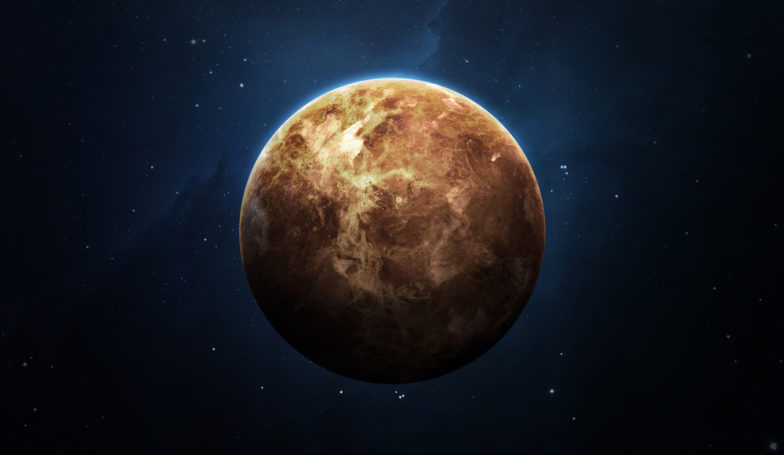Direct Distance Measurements to Center of the Milky Way
A team of four astronomers from the United States, Germany, and China have placed the biblically predicted big bang creation model1 on a more secure footing by producing the first-ever direct distance measurement to the center of the Milky Way Galaxy (MWG).2 While previous teams have made accurate indirect measurements of MWG’s center,3 this group, led by Harvard University’s Mark J. Reid, is the first to make a direct distance measurement based on a trigonometric parallax that is completely free of any assumptions about the physical conditions of the MWG or any of its stars.
The distance to the center of the MWG is important for establishing the biblically predicted big bang creation model for three different reasons. First, it is critical for determining the dark matter content of the MWG and the total mass of the Local Group (the galaxy cluster in which the MWG resides). The values for both of these features are significant predictions of big bang cosmology. Second, the distance to the galactic center represents the anchor for determining the expansion rate for the universe. Cosmic expansion rate is the single most important factor for measuring the age and size of the universe and, when combined with measurements of the cosmic microwave background radiation fluctuations, provides values for the amount of dark matter in the universe and for the equation of state that governs the nature of dark energy. All these cosmic features are fundamental elements of the big bang creation model. Third, the distance to the MWG’s center is vital for confirming the reliability of the theory of general relativity to predict the dynamics (motions) of bodies in the universe. The reliability of this theory forms the fundamental assumption undergirding many of the space-time theorems that prove a causal Agent beyond space and time created the universe of matter, energy, space, and time.
Reid’s team used the Very Long Baseline Array (VLBA), an array of ten radio telescopes stretching from Mauna Kea, Hawaii, to St. Croix, U.S. Virgin Islands, to measure with extreme precision the positions of water maser sources in Sagittarius B2M and Sagittarius B2N. The VLBA has the equivalent resolving power of an 8,611-kilometer (5,351-mile) diameter radio telescope. Its resolving power is fifty times superior to the best images from the Hubble Space Telescope. With precise position measurements for Sagittarius B2M and Sagittarius B2N made at twelve different times over the course of one year, Reid’s team calculated the distances to Sagittarius B2M and Sagittarius B2N using the trigonometric parallax method.
Trigonometric parallax distance measurements rely upon the plane geometry theorems taught in high school. For example, if one knows the length of the base of an isosceles triangle, then measurements of the angles at either end of the base will deliver the distance to the vertex of the triangle. For trigonometric parallaxes, the diameter of Earth’s orbit about the Sun is the base of the triangle.
Although close to the galactic center, neither Sagittarius B2M nor Sagittarius B2N is exactly at the center. However, Reid’s team also used the VLBA to measure the proper motions of both Sagittarius B2M and Sagittarius B2N relative to the galactic center. These additional measurements allowed the researchers to establish, by direct means only, that the distance to the center of the MWG is 26,000 ± 2460 light-years. This value agrees very well with the best indirect measurements.
By confirming the indirect measurements, Reid’s team helped establish that the big bang creation model stands on a strong foundation. Also, the implied light-travel time provides a new, direct challenge to the young-earth creationist model.4 Though the accuracy in the measurement produced by Reid’s team is presently at only the nine percent level, ongoing calculations by the same team promise to deliver a measurement within the next decade with an uncertainty of less than three percent. Such outstanding precision will yield a much more detailed picture of the origin, history, and structure of the universe. This clearer picture will, in turn, provide a much more definitive test of the big bang creation model.
Endnotes
- Hugh Ross, A Matter of Days (Colorado Springs: NavPress, 2004), 139–148.
- M. J. Reid, “A Trigonometric Parallax of Sgr B2,” Astrophysical Journal (November 10, 2009): 1548–53.
- F. Eisenhauer et al., “A Geometric Determination of the Distance to the Galactic Center,” Astrophysical Journal Letters 597 (November 10, 2003): L121–L124; A. M. Ghez et al., “Measuring Distance and Properties of the Milky Way’s Central Supermassive Black Hole with Stellar Orbits,” Astrophysical Journal 689 (December 20, 2008): 1044–62; S. Gillessen et al., “Monitoring Stellar Orbits around the Massive Black Hole in the Galactic Center,” Astrophysical Journal 692 (February 20, 2009): 1075–1109; E. Vanhollebeke, M. A. T. Groenewegen, and L. Giradi, “Stellar Populations in the Galactic Bulge,” Astronomy and Astrophysics 498 (April 4, 2009): 95–107.
- Ross, 161–74.




